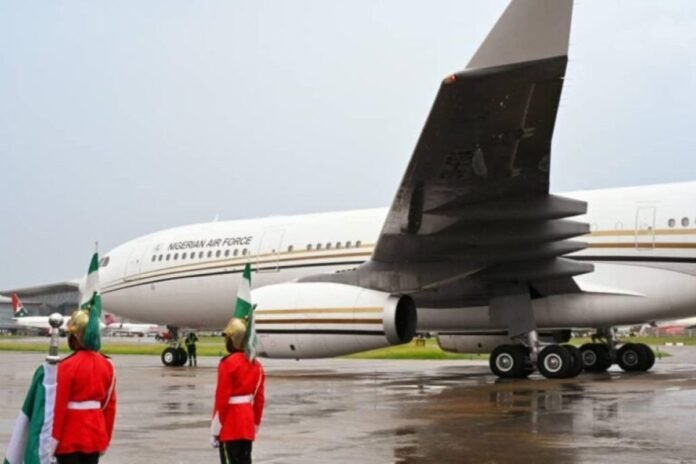The Federal Government spent about N26.38bn on the Presidential Air Fleet within the first 18 months of President Bola Tinubu’s administration, indicating the high cost of maintaining executive air mobility amid persistent calls for austerity.
An analysis of spending records obtained from Govspend, a civic tech platform that tracks government expenditures, revealed that the disbursements were made between July 2023 and December 2024 for the operational and logistical upkeep of the fleet.
Meanwhile, findings showed that between 2016 and 2022, former President Muhammadu Buhari allocated N81.80bn for the Presidential Air Fleet’s maintenance and foreign trips. The amount includes N62.47bn for the operation and maintenance of PAF, N17.29bn for foreign and local trips, and N2.04bn earmarked for other related expenses.
At that time, the Presidency maintained 10 aircraft from the inception of the Buhari administration in May 2015.
Some industry experts believe that the humongous amounts were mainly due to the weakness of the naira to the dollar, since all aviation spending is done in dollars. Others say the Presidency operates a very large fleet, a situation that may continue to swell the quantum of public funds used for the maintenance of the fleet.
According to Govspend, a public procurement tracker website, funds were released in multiple batches under President Tinubu, with high-value outflows concentrated between April and August 2024.
The first major disbursement came on 14 July 2023, when N846.03m was paid as “presidential air fleet forex transit funds”. Just two days later, another N674.82m was released. That month alone, the fleet consumed over N1.5bn.
By August, the pace of releases intensified. N2bn was disbursed on 16 August, and additional sums of N387.6m and N713.22m were recorded earlier that month. In the fourth quarter of 2023, a notable release of N1.26bn was recorded in November.
The year 2024 also opened with substantial disbursements. In March alone, two separate releases of N1.27bn each were made on the 7th and 9th of the same month. This was followed by N5.08bn on April 23, the single largest transaction recorded within the 18 months under review.
On May 8 and May 11, N2.43bn and N1.27bn were disbursed, respectively, with yet another N1.27bn sent out on May 25. By August, another flurry of transactions raised fresh concerns over the fleet’s operating costs. On August 5, the government released N1.25bn and N2.21bn, followed by N902.9m and N1.24bn on the 6th. In total, August alone accounted for over N5.6bn in fleet spending.
The payments continued through the final quarter of 2024, albeit in smaller volumes. These included N160.4m on August 8, N35m on September 11, N133m on September 29, and a series of smaller disbursements in December, including N290m, N102.95m, N25.25m, and N8.7m.
The Presidential Air Fleet, managed by the Nigerian Air Force, is responsible for the air transport needs of the President, Vice President, and senior government officials. Despite its strategic role, the cost of maintaining the fleet has been a long-standing subject of public scrutiny and criticism, particularly in light of Nigeria’s fiscal pressures and rising debt service obligations.
A former senior official at Nigerian Airways described the high costs associated with maintaining Nigeria’s presidential fleet as a complex issue likely to persist unless major structural changes are made.
Frank Oruye, a former Deputy Director of Engineering at the now-defunct national carrier, expressed concern over the recurring expenditure on the presidential aircraft, citing both operational and geopolitical factors.
Speaking in an interview, Oruye, who oversaw the procurement of aircraft for former President Olusegun Obasanjo’s official use, explained that the fleet’s diversity in aircraft types could significantly drive up maintenance costs.
He emphasised that each type of aircraft requires its own set of equipment and servicing protocols, which complicates logistics and increases expenses.
“For example, the current fleet includes jets from various manufacturers, such as a Global Jet, a French-made aircraft, a Canadian jet, an American Gulfstream, among others. Before you even consider large aircraft like the Boeing 737 or the newly acquired Airbus A350 under President Tinubu, you are already managing a wide range of aircraft that each require specialised support equipment,” he stated.
Oruye noted that maintaining such a varied fleet requires duplication of ground equipment and tools, which may not be interchangeable.
![]()










